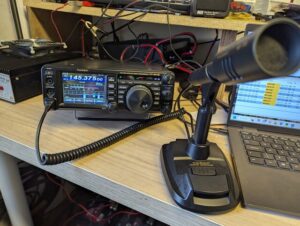
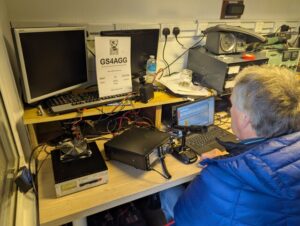
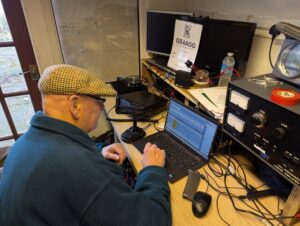
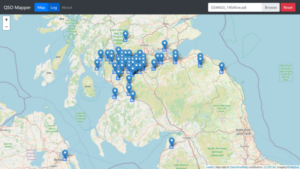




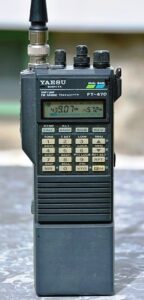
My experience with a faulty Yaesu FT-470 which was kindly gifted to me by another amateur may help someone else who owns an FT-470 2m/70cm dual band talkie that develops a similar problem.
When I initially tried out the talkie, I heard my TX on another radio, so it sounded like it was working, but in fact nobody else could hear me, not even a station just a couple of miles away.
I also noticed that RX was terrible as well and I could only hear very powerful signals, but even at that, it was with noise.
It transpired that the deaf RX and TX not getting out symptoms had something in common…
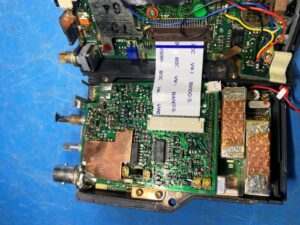
Once I got the top board separated and out of the cabinet, I noticed a very crusty looking solder joint below a stand off pin, which in turn was soldered, via solid core wire, to the centre pin of the BNC socket.
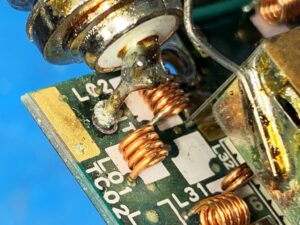
Things were a bit worse on the other side of the PCB once that had been removed from the rear cabinet.
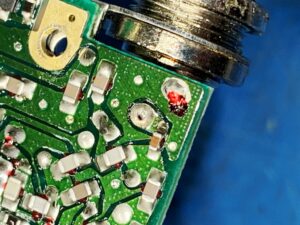
A loose antenna socket had flexed the solid core wire soldered from the BNC socket to the stand off pin on the PCB, and in turn stressing the delicate print below.
Stranded flexible wire between BNC and stand off pin might have been better for preventing this from occurring.
I would add that the socket was not loose when the radio was given to me, otherwise that might have led me to the fault sooner, but looking at the scrape marks on the threaded, slotted circular BNC securing ring, it became obvious that the ring had been tightened with pliers at some point.
The PCB track leading to the stand off pin, that feeds the BNC, had separated from the board and from C2001 (470pF) which is in series with the antenna socket.
If you look closely at the photo (above), the fracture between cap and print can be seen.
When a 0.6mm soldering bit on a temperature controlled solder station was placed on this track, it fell off never to be seen again!
Oh well, not to worry, I’ll just solder to the end of the SMD cap then, I thought, given that it appeared to be ok in the photo.
Alas, no go – the capacitor had suffered from being pulled about too much by the flexing, and ultimately, broken print with the result that the antenna side contact of the capacitor disintegrated as soon as any heat was applied.
So a 470pf cap was now needed.
Doesn’t have to be SMD as it’s possible to solder one end of a “normal” cap to the board and the other end direct to the BNC at a push, although SMD caps are likely to be less inductive.
I managed to find a replacement 470pF cap on eBay which restored normal operation.
Effectively, I’d been TXing into no antenna!
Fortunately no other damage was done – I was initially fearful that the now rare and expensive Mitsubishi 2m and 70cm PA ICs might have failed.
One to watch out for, and the moral of the story is to make sure that the BNC socket on your FT-470 remains tightly secured otherwise this repair will become necessary at some point.
I trust of some interest and help if you experience a similar problem.
73
Colin
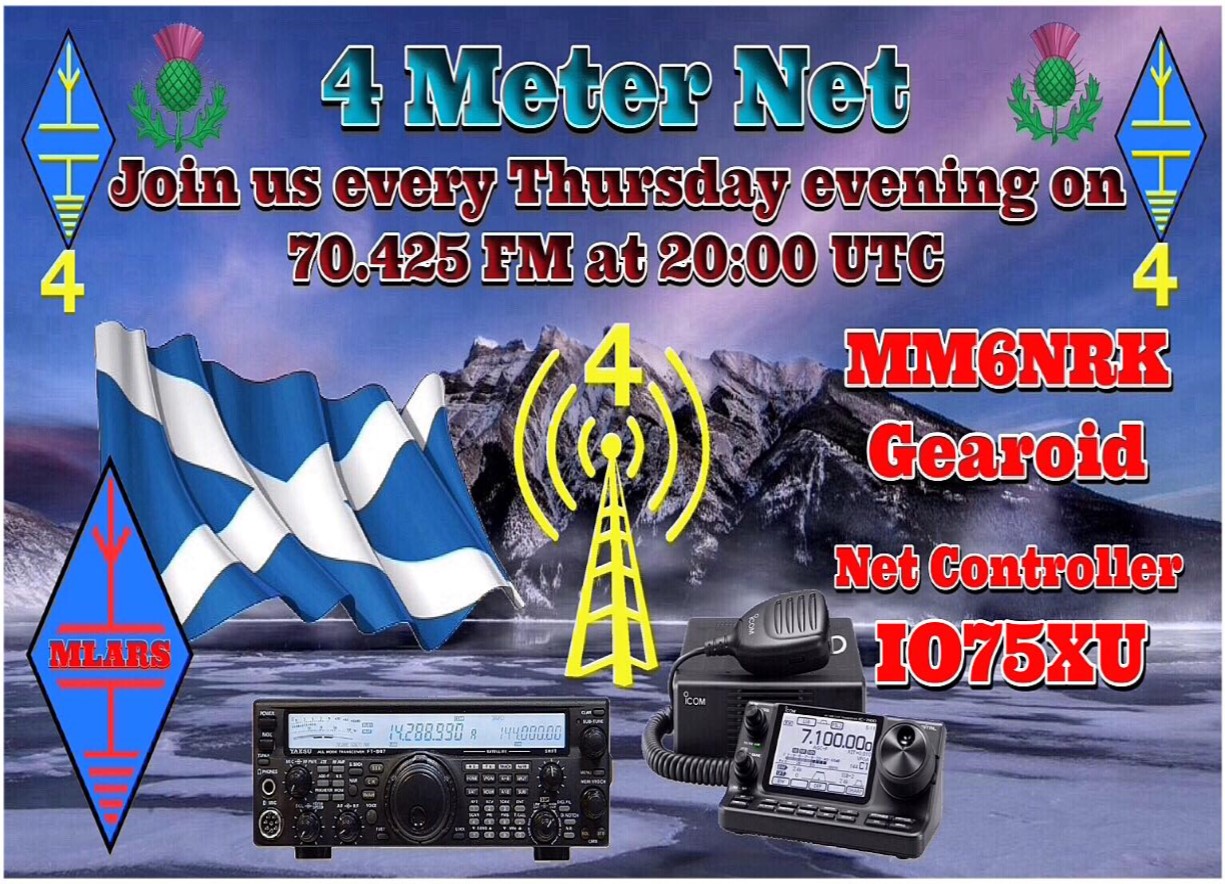
The 10TH MARCH will be the first anniversary of the MID-LANARK ARS (based out of Newharthill, Motherwell) 4 Metre Net, initiated (and hosted) by Gearoid (Gerard) – MM6NRK on behalf of the Club.
As a consequence of Covid restrictions, over the last couple of years, many CLUB NETS were established, though none in GM on 4 Metres.
If you haven’t had a chance to join Gerard, Mid Lanark, and many WoSARS Members, and you fancy trying 4M, there are quite a collection of ex PMR (private mobile radio) radios on sale on various sites that can be converted for this band.
GL and work you on 4?
Jack(;>J

CONTENTS:
ZR6D Anette appeals for input to celebrate 100 years of Amateur Radio 2025
Ja No Well Fine- Aconcagua SOTA World Record
More about SOTA-YLs: Mexico, Poland, Austria, Czech Republic, GMA, USA
Yls in 14th Summer Lighthouse Weekend – Southern Hemisphere. –
Out-and-About
YL operator from Seychelles.
Polish YL Dorothy SP2TO and OM Slavo Chabiera SP2JMB Dx from Mauritius
Silent keys
Contacts & Calendar
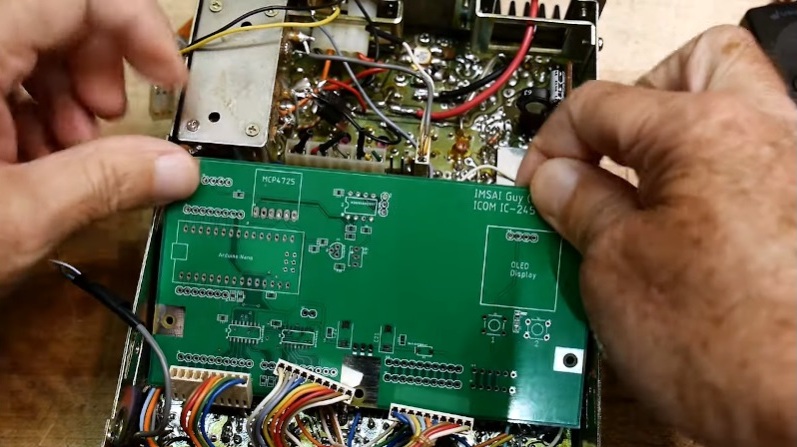
By Al Williams
Old radios didn’t have much in the way of smarts. But as digital synthesis became more common, radios often had as much digital electronics in them as RF circuits. The problem is that digital electronics get better and better every year, so what looked like high-tech one year is quaint the next. [IMSAI Guy] had an Icom IC-245 and decided to replace the digital electronics inside with — among other things — an Arduino. Read MORE ……………

By Colin Butler of https://www.icqpodcast.com/
Phil Karn KA9Q, Randy Standke KQ6RS and students at the Mount Carmel High School Amateur Radio Club have constructed and deployed an amateur radio marine buoy, callsign KQ6RS, transmitting 14.0956 MHz USB WSPR. About 700 km off the coast of southern California, the buoy is transmitting WSPR on 20m using the callsign KQ6RS and is being received all over the US and into Canada and Brazil.
The electronics is the 20m WSPR version of the WB8ELK “pico tracker” that has been flown quite a few times (including by us) on long-duration balloons. We removed the solar panels and substituted 21 ordinary alkaline D-cells wired to supply 4.5V. We estimate the battery lifetime will be 6 months.
The basic design was inspired by Bob, WB4APR, at the US Naval Academy. Physically, the buoy is just a 5′ section of 4″ PVC pipe, ballasted at one end to float vertically in the water. The top is closed by a sewer pressure test plug I found at Home Depot; it has a bolt in the centre that acts as a convenient feed-through and mounting point for the antenna, a stainless steel CB whip with a matching network designed, tested and carefully tuned by Randy. We use the sea as a counterpoise, but to avoid direct metal/seawater contact we lined the inside of the pipe with copper tape to form a capacitive connection. We probably spent too much time on this; Randy even modelled the electrical fields in the seawater with a professional RF analysis package.
Checkout the Bouy’s Latest – HERE .
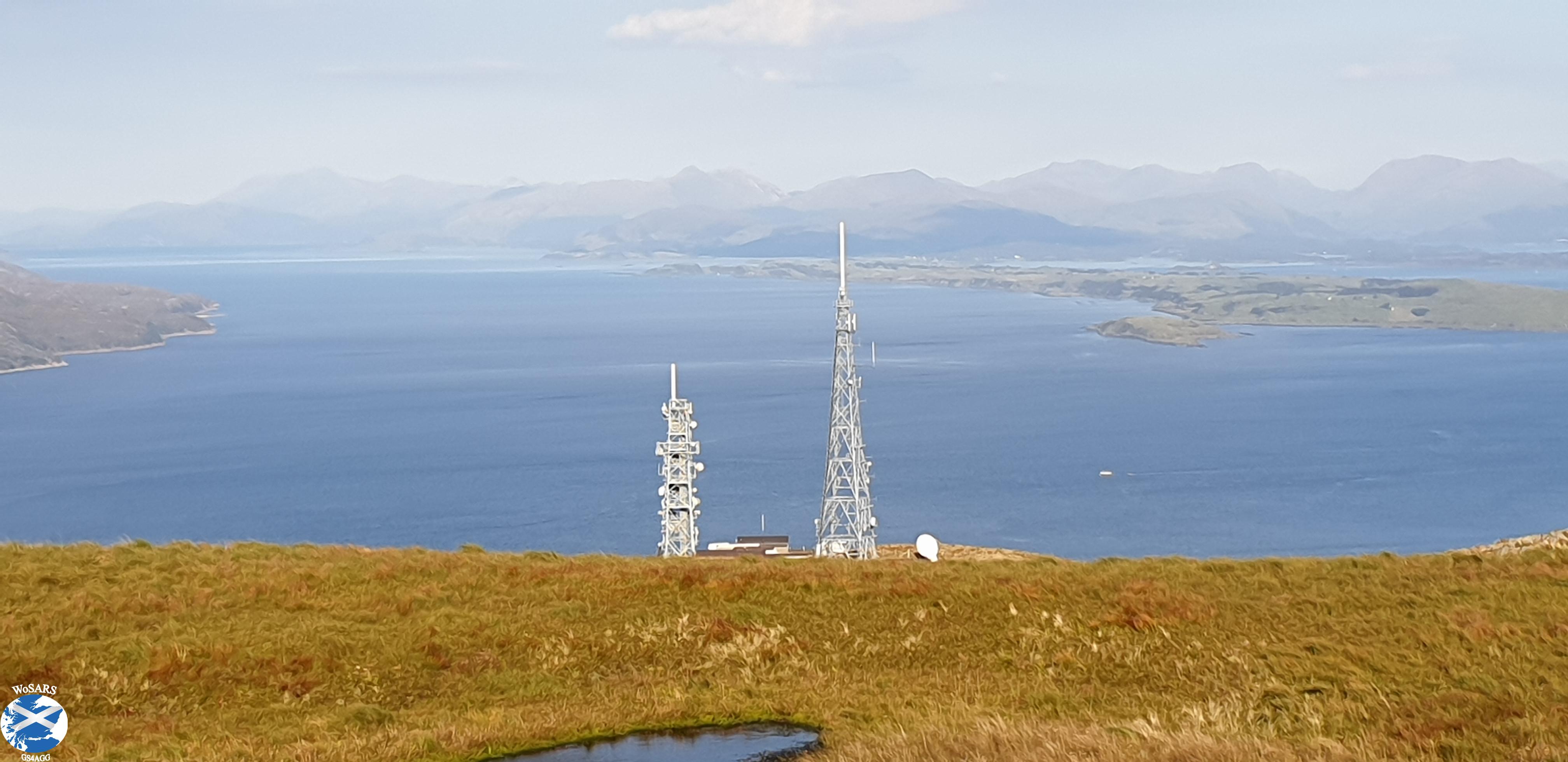
For the last couple of years HI has been suffering a form of ‘BLOCKING‘. This was tracked down to the HI’s collinear and the internal components. Thus required to be replaced.
John – MM0JRM (HI’s Keeper) and Robert – GM4GUF, took advantage of the lovely wx during the last weekend to carryout the replacement. (the replacement aerial was kindly supplied by Paul – GM1YUO Fort William)
In discussion with Robert on 2, he has supplied a couple of pictures which may give you an idea just how well this repeater is placed to serve the West Coast amateur community.
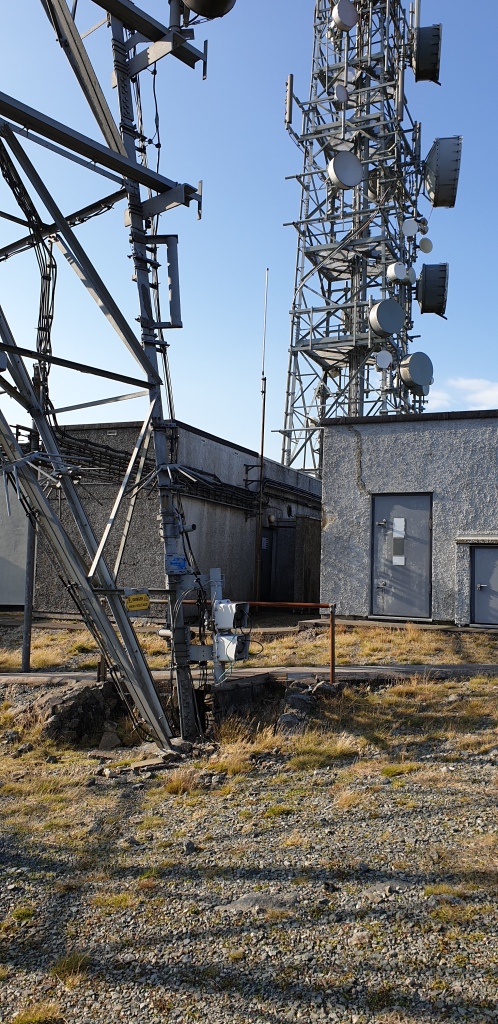
And remember, these repeaters have to be paid for both from a material and annual running costs – point of view. So if you do use CSFMG Repeaters then please think about supporting the Group.
73
Jack (;>J
© 2019-2023 WoSARS.Club